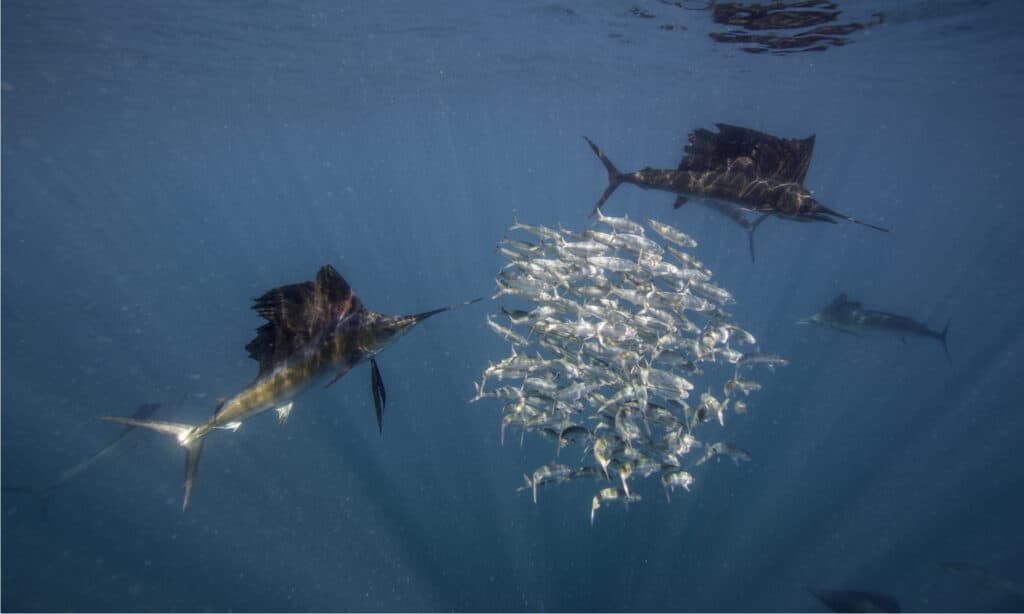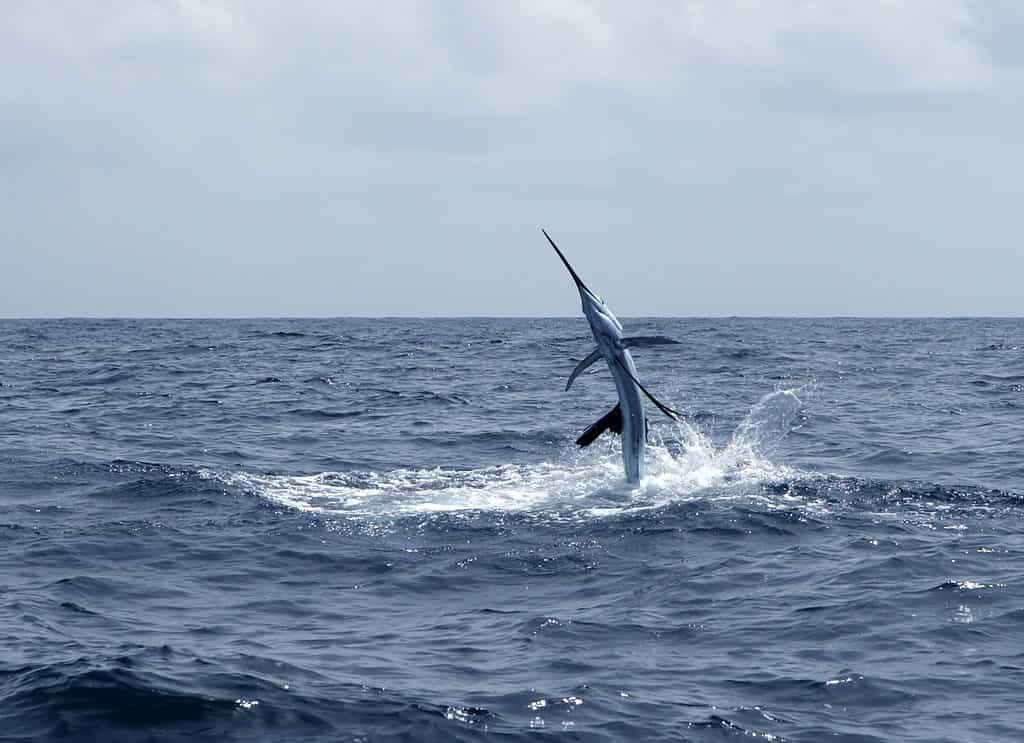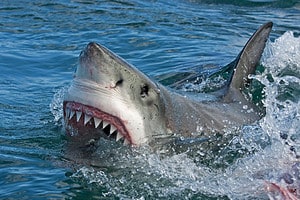Sailfish are pretty incredible animals, even if they are constantly mistaken for blue marlins and swordfish. The sailfish species is beloved by fishermen around the United States, but they are particularly popular among anglers in Louisiana. So, what was the largest sailfish ever caught in the Bayou State?
Let’s take a look at what sailfish are, their history in the world of fishing, and all the details about the largest sailfish ever caught in Louisiana.
What is a Sailfish?
The billfish species known as sailfish, which is classified as Istiophorus albicans or Istiophorus platypterus in scientific circles, is a member of the Istiophoridae family. They are renowned for their enormous size, agility, and a distinctive dorsal fin that projects from their body and resembles a sail. These gorgeous fish are loved for their fighting prowess. They are a favorite of sport fishermen throughout the United States, especially in Louisiana.
The Atlantic and Indo-Pacific seas are where sailfish are found in their natural habitat. They can be discovered in seas that are tropical or subtropical. Such seas include the Caribbean Sea, the Gulf of Mexico, the eastern Pacific Ocean, and the Indian Ocean. With some individuals traveling more than 2,500 miles in a single year, they are a highly migratory species.
The large, carnivorous sailfish can grow to be quite large, but that doesn’t impede their agility or speed whatsoever. Their body is sleek, and they catch their prey with a long, pointed bill. Their body is covered in minute scales that overlap, which helps them swim faster and reduce drag.
Sailfish are easy to identify by their sail-like dorsal fin, which they can raise or drop according to their mood or degree of excitement. The long, flexible spines that support this dorsal fin, commonly known as the sail, allow the fish to change direction fast and with exceptional agility.

Sailfish (pictured) are expert hunters that use their dorsal fins and sharp spears to hunt for fish.
©wildestanimal/Shutterstock.com
Sailfish Behavior
As opportunistic feeders, sailfish will consume nearly anything they can catch. They mostly eat sardines, herring, and other tiny fish, as well as squid and other cephalopods. Prior to swallowing their prey whole, they stun it with their bill.
Being a very social species, sailfish are often seen swimming in small groups of two to six people. Male sailfish participate in elaborate courtship displays during mating season, which happens in the warmer months of the year. They flash their sail and perform acrobatic displays to entice a partner.
During the spawning process, the male sailfish fertilizes the female’s five to 10 million eggs. Until they hatch into their larval stage, the tiny buoyant eggs are carried around by ocean currents. The sailfish juveniles ultimately emerge from the larval stage, grow quickly, and become sexually mature in two to three years.
Sailfish Protections
These fish are a vulnerable species because of overfishing and habitat degradation, despite their size and physical strength. In addition to being sought by recreational fishers, they are often mistakenly captured by commercial fishing vessels that are pursuing other species like swordfish. Sailfish numbers have decreased significantly as a result. The International Union for Conservation of Nature (or the IUCN) has categorized them as a species of concern.
Typical Size of Sailfish
Sailfish are a popular target for sport fishermen all around the world. This is due to their reputation for their outstanding size and physical strength. These beautiful fish are among the biggest species of billfish in the ocean. They can grow to a maximum length of 11 feet and a weight of over 200 pounds.
A sailfish typically measures six to eight feet long and weighs between 60 and 100 pounds. However, sailfish as large as 10 feet and weighing more than 200 pounds have occasionally been caught. The warm, nutrient-rich waters of the Pacific Ocean are where one can generally find these bigger individuals.
Because of their sleek but heavy bodies, sailfish can move through the water fast and swim at great speeds. They can paralyze their prey with their large, pointed beak before devouring it whole.
The History of Fishing for Sailfish
The sport of sailfish fishing has a long and colorful past! It first became popular in the early 1900s. Sailfish fishing has a long history in the United States in particular, with the 1930s and 1940s seeing a rise in popularity for the sport.
Initially, handlines and natural baits like ballyhoo and mackerel were used to catch sailfish. However, anglers started experimenting with new gear and methods in the 1930s, which resulted in the creation of the trolling technique. Trolling is the process of trailing a line behind a moving boat while using bait or a lure to mimic a live fish’s swimming motion. This approach quickly gained popularity among fishermen because it was so successful at capturing sailfish.
New Technologies in Sailfishing
The introduction of new technology in the 1950s, including sonar and depth finders, further increased the likelihood of catching sailfish. With better precision, anglers could now pinpoint schools of fish, improving their chances of landing a catch.
With the founding of the International Game Fish Association (also known as the IGFA) in the 1950s, sail fishing in the United States became more structured. The IGFA was established to assist in the protection of fish species and to advance moral angling practices. As part of its efforts to regulate the sport and assure fair competition, the organization has since created rules and procedures for record-breaking catches.
Sailfishing gained popularity again in the United States throughout the 1960s and 1970s, with Florida becoming as one of the leading fishing locations. The warm, nutrient-rich seas along Florida’s coast supplied the sailfish with the appropriate environment, making the state a popular destination for fishing competitions and tournaments. Louisiana was also a hotspot for sailfishing.
Sailfishing Today
Florida continues to be one of the top fishing locations in the United States, where sailfish fishing is still a popular activity. Every year, Florida has a large number of fishing events and tournaments that draw fishermen from all over the world. Louisiana may not have a ton of sailfishing competitions specifically, but the state is a popular spot for sailfishing as well.
Sailfishing has come under fire from several environmental organizations despite its widespread popularity. Some regions have seen a decline in sailfish populations as a result of overfishing and the use of non-selective fishing techniques like long lines. As a result, several fishing groups and organizations have enacted laws to safeguard the species, such as minimum size requirements and catch-and-release fishing regulations.
Sailfish fishing in the United States has a lengthy and rich history that dates back to the early 1900s. The sport has changed dramatically over time, with the introduction of new methods and tools increasing angler success rates. Sailfishing is still a very popular activity today, especially in Louisiana and Florida, where several fishing events and tournaments are conducted every year. While some environmental organizations have criticized the sport, efforts have been made to promote ethical and sustainable fishing methods to guarantee the survival of this magnificent species. It is definitely possible to enjoy sailfishing ethically!
The History of Fishing for Sailfish in Louisiana
In Louisiana, sailfish fishing has a long and illustrious history that dates back to the early 1900s. Anglers typically utilized handlines and natural baits to capture sailfish in the early days of the sport. The success rate of anglers, however, greatly rose with the introduction of new technologies and tactics, such as trolling and the use of artificial lures.
Sailfish thrive in the seas off the coast of Louisiana, making it one of the best locations for sailfish fishing throughout the 1950s and 1960s. A prominent destination for fishing competitions and tournaments, the state attracted fishermen from all over the world.
When anglers started using the kite fishing method in the 1970s, it marked one of the most important changes to sailfish fishing in Louisiana. This technique includes suspending the bait in the water with a kite so that it may swim freely and draw sailfish. Particularly in the shallow seas off the Louisiana coast, kite fishing proved to be quite successful in catching sailfish.
Sailfishing has had its share of difficulties in Louisiana, despite the state’s popularity with the sport. Some regions have seen a decline in sailfish populations as a result of overfishing and the use of non-selective fishing techniques that we mentioned earlier. As a result, several fishing associations and governmental organizations have put in place laws to save the species.
Sailfish Angling in Louisiana Today
Sailfishing is still a very popular activity in Louisiana today, especially in the Gulf of Mexico. The Louisiana Billfish Classic and the Grand Isle Tarpon Rodeo are just two of the many fishing contests and tournaments that take place every year in the state of Louisiana. These occasions attract anglers from all over the world and are evidence of sailfish fishing’s lasting appeal in Louisiana.
When it comes down to it, Louisiana has a long and illustrious history of sailfish fishing that dates back to the early 1900s. Anglers use a range of methods and tools to catch these gorgeous fish, making the state one of the top locations for sailfish fishing. Despite the difficulties the sport has faced in terms of overfishing and unethical practices, initiatives have been made to support ethical and sustainable fishing methods in order to support sailfish populations.

Sailfish (pictured) have been very popular fish for angling in Louisiana, though that popularity has led to population declines.
©lunamarina/Shutterstock.com
The Largest Sailfish Ever Caught in Louisiana
The largest sailfish ever caught in the state of Louisiana was no joke. And it’s been over 70 years since the largest specimen was caught! No one has been able to catch a sailfish in Louisiana that was quite as large as the specimen caught by John Lauricella in October of 1953. Lauricella’s sailfish catch was a whopping 96 pounds!
There have been some Louisianan rivals since then, but none have caught a specimen quite as large as Lauricella’s 96-pound monster. R. Wikenhauser managed to come close when they caught a sailfish that weighed 90.5 pounds back in June of 1979. Just as well, Cheyenne Willians managed to catch a pretty big 85.75-pound sailfish in Louisiana in June of 1981. To this day, though, Lauricella’s sailfish is still the largest sailfish ever caught in the state of Louisiana.
Where is the Gulf of Mexico Located on a Map?
The Gulf of Mexico is a vast body of water that lies to the south and west of Louisiana. It stretches all the way from the Yucatan Peninsula in Mexico to the western coast of Florida, covering an area of approximately 600,000 square miles. In Louisiana, you can access the Gulf via several ports along its coastline.
As for sailfishing locations, there are many great spots throughout the Gulf where this popular sport fish can be found. Some prime areas include offshore oil rigs and platforms, deep channels, and drop-offs near reefs or wrecks, as well as around natural features like underwater pinnacles or seamounts.
To get directions to specific sailfishing locations in Louisiana’s portion of the Gulf, it’s best to consult with local fishing guides or charter companies who have firsthand knowledge of where fish are biting on any given day. They’ll be able to provide you with up-to-date information on weather conditions, tide patterns, and other factors that can affect your chances for success out on the water.
The Largest Sailfish Ever Caught in the World
Sailfish can reach vast sizes and are present in waters all around the world, both in the Atlantic and Pacific oceans. The largest Pacific sailfish ever caught, according to the IGFA, was a 221-pound sailfish caught off the coast of Sant Cruz Island in Ecuador. The catch was made by angler Carl Stewart in 1947. The all-tackle world record for the largest Atlantic sailfish was achieved by angler Marco Couto in 2014. His catch was 142 pounds and the catch took place in March of 2014 in Lobito, Angola.
A 213-pound sailfish was caught in 2016 by angler Chase Offield off the coast of Florida. The fish was caught using a live bait setup and was 11 feet long. The IGFA confirmed the catch, making it the largest sailfish ever taken off the Florida coast.
Off the coast of Costa Rica, one of the biggest sailfish ever caught in the Pacific Ocean was caught in 2014. The fish was 11 feet long and 225 pounds in weight. Kent Carbis, the angler, reeled in the fish after around 45 minutes of wrestling it using live bait. Also off the coast of Costa Rica, an exceptional sailfish catch was made in 2019. Angler Joe Skrumbellos caught a sailfish that weighed 237 pounds and was 11 feet long. The fish was caught by Skrumbellos using live bait, and the IGFA certified the capture shortly after.
These are just a few of the world’s largest sailfish that have ever been caught. Sport fishers often target sailfish since they can be found in warm areas all around the world. They are renowned for their extraordinary speed, dexterity, and capacity to put up a fierce fight when hooked.
Tips for Catching a Sailfish
If you want to target Pacific or Atlantic sailfish, there are a few best practices you can follow to improve your chances of landing one. All of these best practices are particularly helpful for fishing for sailfish in Louisiana.
To start, make sure you have the appropriate equipment. For catching sailfish, light equipment such as 20 to 30-pound test line is typically used. Sailfish can also be attracted to live bait like ballyhoo or goggle eyes.
It also helps to understand how the sailfish feeds. These fish often eat at the surface where they can hunt for baitfish schools. Watch for indicators of feeding activity, such as birds diving or fish leaping.
You should also be ready for a struggle when a sailfish is hooked. These are not lightweight fish! It’s crucial to have a knowledgeable crew on board to help with reeling in the catch because these fish are noted for their gymnastic jumps and amazing speed.
Lastly, when fishing for sailfish, always use the catch-and-release technique. Because of their significance in marine ecology, these fish should be treated carefully to ensure their survival.
The sailfish is a magnificent game fish that has the potential to reach tremendous sizes. With weights well over 200 pounds, some of the biggest sailfish ever caught have broken world records. These catches are evidence of the power of the sailfish. But, it is wise to remember that sailfish are at risk of becoming endangered. If you plan to catch a sailfish, take your photos and throw them back!
The photo featured at the top of this post is © A Cotton Photo/Shutterstock.com
Thank you for reading! Have some feedback for us? Contact the AZ Animals editorial team.







